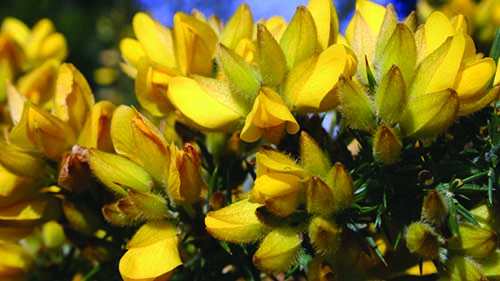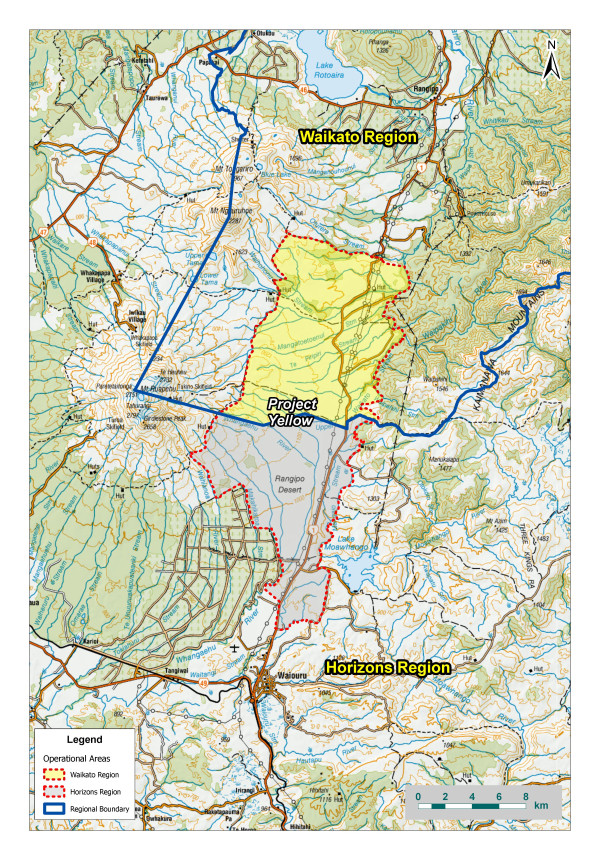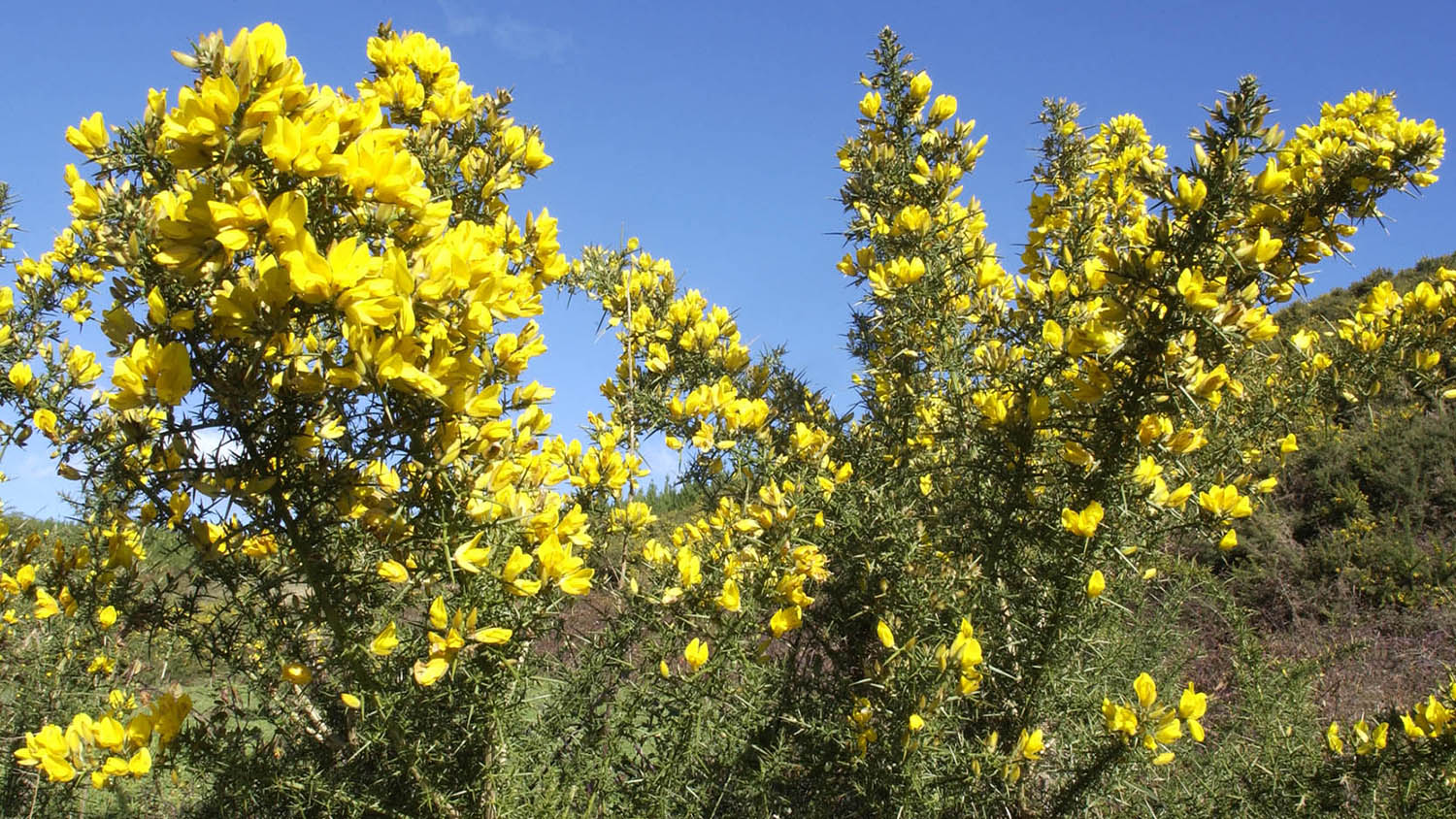| Management programme |
| Sustained control Site-led (Wetlands and Project Yellow) |
| Objectives |
| Keep gorse from impacting land free of or being cleared of it, including in wetlands, and the central North Island tussock-lands. |
| Impacts |
| Economic, biodiversity, soil resources, human health, social and cultural wellbeing, amenity/recreation |
Gorse was introduced to New Zealand from western Europe in the early 1800s. Originally used for hedging and windbreaks, it has long been recognised as a pest plant and is widespread in the Waikato region. A many branched, spiny woody shrub, it is very hardy, tolerating hot to cold temperatures, low to high rainfall, wind, salt, damage and grazing, and all soil types.

What does it look like?
A deep rooted, woody perennial that can grow up to 3m high.
Flowers
- Yellow pea-like flowers (13mm-20mm).
- Flowers mainly between May and November (occasionally all year around).
Fruit/seeds
- Green flattened seed pods (13mm-25mm long), turn brownish black when ripe.
- Smooth rounded seeds are ejected from their pods up to 10m away.
Leaves/stems
- Seedling's leaves are initially made up of three hairy leaflets.
- Later, the leaves of gorse take the form of deeply furrowed spikes.
Why is it a pest?
Gorse forms monocultures temporarily in many habitats, although it can persist in areas where it isn’t overtopped and shaded out. It can be a serious problem over large areas, including in pasture where it reduces available grazing for livestock. It also grows along roadside verges, in sand dunes, cliffs, wetlands, scrub, river and forest margins and coastal habitats. Its ability to increase nitrogen in poor soil types (for example, in gumland or on sand dunes) can alter the types of plants that grow there, including specialised native plants like herbs, orchids, or low ferns.
Gorse can have positive impacts on reverting pasture areas and bare ex-forest sites as it acts as a nursery crop for native species, adding soil nitrogen and humus, and providing shelter and shade. In some cases, it can also provide valuable habitat for threatened species, like the Mahoenui giant wētā. Gorse opens up as it ages and dies, especially once it is overtopped and completely shaded. Replacement of gorse by native species may be less likely on dry sites.
Gorse prickles can pierce skin and become infected and dense shrubs with prickly spines can obstruct access.
Project Yellow Site-led Area

Control methods
Many herbicides are not effective on gorse because of the shape of the ‘leaves’ and the thick cuticles on the spines, which help prevent absorption of herbicides. However, gorse can be killed using herbicides like glyphosate, metsulfuron or triclopyr/picloram mix or stump treated with picloram or glyphosate gel.
Physical control
Physical control includes removing plants by hand or with tools and machinery. It has been found that when the plants are big, cutting at the base (at flowering time) and fraying the stumps causes the stump to lose moisture and generally kills the plant. As with many scrub weeds, gorse soon regrows from dormant buds on stumps if shrubs are cut with chainsaws or slashers without prior herbicide treatment. Regrowth from buds can also occur after fires. The cheapest treatment for large infestations of gorse may be to fence it off and wait for it to revert to native bush. On less steep land, ploughing or repeated rotary slashing can be used.
Herbicide control
Basal treatment of trunk
The basal treatment X-Tree® can be applied with a low pressure sprayer using solid cone nozzle or a paintbrush. Liberally treat the full circumference and at the base of the shrub or tree trunks so the spray thoroughly wets at least 2-3 times around the diameter of the lower stem or trunk including the root collar area.
Cut stump treatment
A hand slasher or scrub cutter can be used on isolated bushes but if the stump is not treated immediately with a herbicide, regrowth will occur. Large areas of slashed stumps can be left to grow to 0.5m in height and then sprayed.
Spray application
As mentioned, gorse can be killed using herbicides like glyphosate, metsulfuron or triclopyr/picloram mix or stump treated with picloram or glyphosate gel. Hard grazed gorse or recently slashed gorse is difficult to control because of reduced foliage to take up herbicide. Active growth is more susceptible to spraying. Your biosecurity pest plant officer can give you advice on the timing and method of application best suited to your situation.
Safety when using herbicides
- Follow the instructions on the manufacturer’s label.
- Always wear protective clothing.
- Always minimise the risk to your other plants.
- Contact the supplier for further advice.
Disclaimer: Any product names mentioned below are not an endorsement nor are they a criticism of similar products not mentioned.
Summary of herbicides and application methods for control
| Herbicide | Application |
| Picloram gel | Cut stump treatment. |
| Glyphosate | Spray application and cut stump treatment |
| Glyphosate gel | Cut stump treatment. |
| Metsulfuron | Spray application and cut stump treatment. |
| Triclopyr/picloram mix | Spray application and cut stump treatment. |
| Triclopyr | Spray application and cut stump treatment. |
| X-Tree ® | Basal treatment of trunk. |
| Herbicide rules will apply. You may need to notify neighbours if spraying. The Waikato Regional Plan explains the agrichemical (herbicides) use rule in section 6.2 | |
More information
Advice
- For additional information and advice on control methods, call our pest plant staff on freephone 0800 800 401.
- Chemical company representatives, farm supply stores, garden centres or the Weedbusters website can also be good sources for advice.
Publications
The following publications are available for download or from Waikato Regional Council. Contact us to request a copy (freephone 0800 800 401).






To ask for help or report a problem, contact us
Tell us how we can improve the information on this page. (optional)